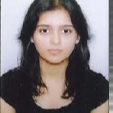International Journal of Information Engineering and Electronic Business (IJIEEB)
IJIEEB Vol. 5, No. 3, 8 Sep. 2013
Cover page and Table of Contents: PDF (size: 471KB)
Ergodic Capacity of MIMO Channel in Multipath Fading Environment
Full Text (PDF, 471KB), PP.41-48
Views: 0 Downloads: 0
Author(s)
Index Terms
MIMO (Multi input Multi output), CSI (Channel State Information), SISO, MISO, SIMO, SNR, Outage channel capacity, correlation
Abstract
The demand for the higher bandwidth is continuously increasing, and to cater to wireless communication can be used. The bandwidth has a close relationship with data-rates in turn has a dependency with channel capacity. In this paper, the channel capacity is estimated when CSI is known/not known at the transmitter and it has been shown that the knowledge of the CSI at the transmitter may not be very useful. The channel capacity for the random MIMO channels is also estimated through simulation and outage capacity is discussed. Finally, MIMO channel capacity in the presence of antenna correlation effect is estimated and obtained results are discussed.
Cite This Paper
Rafik Ahmad, Devesh Pratap Singh, Mitali Singh, "Ergodic Capacity of MIMO Channel in Multipath Fading Environment", International Journal of Information Engineering and Electronic Business(IJIEEB), vol.5, no.3, pp.41-48, 2013. DOI:10.5815/ijieeb.2013.03.05
Reference
[1]U. Erez, S. Shamai, and R. Zamir. Capacity and lattice strategies for cancelling known interference. In International Symposium on Information Theory and its Applications, pages 681–684, Nov. 2000.
[2]E. Telatar. Capacity of multi-antenna Gaussian channels. European Trans. on Telecomm. ETT, 10(6): 585–596, November 1999.
[3]M.Ajaybabu, P.Satyanarayanan, Dr. S. Sri Gowri Channel Capacity of MIMO with CSI available at the Transmitter, International Journal of Advanced Engineering Sciences And Technologies, Vol No. 10, Issue No. 1, 088 – 091, 2011.
[4]Goldsmit h A., Jafar A. S., Jindal N., Vishwanath S.,“Capacity Limits of MIMO channels”. IEEE Journal on Selected Areas In Communication, Vol. 21, No. 5, June 2003.
[5]G.J. Foschini and M.J. Gans, “On limits of wireless communications in a fading environment when using multiple antennas,” Wireless Personal Communications, vol. 6, pp. 311 335, 1998.
[6]Shannon, C. E.,(1948) “A mathematical theory of communication,” Bell Syst. Tech. J., vol. 27,pp. 379–423, 623–656, July and October 1948.
[7]V. Tarokh, N. Seshadri, and A.R. Calderbank, “Space-time codes for high data rate wireless communication: performance criterion and code construction,” IEEE Trans. Info. Theory, vol. 44, no. 1, pp. 744–765, Mar. 1998.
[8]D. S. Shiuet al., “Fading correlation and its effect on the capacity of multi-element antenna systems,” IEEE Trans. Commun., vol. 48, pp. 502–513, Mar. 2000.
[9]S. L. Loyka and J. R. Mosig, “Channel capacity of N-antenna BLAST architecture,” Electron.Letters., vol. 36, no. 7, pp. 660–661, Mar. 2000.
[10]S. M. Alamouti, “A Simple Transmitter Diversity Scheme for Wireless Communications,”IEEE J. Select. Areas Communications, vol. 1, pp. 1451–1458, October 1998.
[11]S. Loyka, G. Tsoulos, “Estimating MIMO System Performance Using the Correlation Matrix Approach” IEEE Communication Letters, v. 6, N. 1, pp. 19-21, Jan.2002.
[12]H. Bolcskei, D. Gesbert, and A. J. Paulraj, “On the capacity of OFDM based spatial multiplexing systems,” IEEE Trans. Commun., vol. 50, no. 2, pp. 225–234, Feb. 2002.
[13]O. Oyman, R. U. Nabar, H. Bölcskei, and A. J. Paulraj, “Characterizing the statistical properties of mutual information in MIMO channels,” IEEE Trans. Signal Process., vol. 51, no. 11, pp. 2784–2795, Nov. 2003.
[14]M. R. McKay, P. J. Smith, H. A. Suraweera, and I. B. Collings, “On the Mutual Information Distribution of OFDM-Based Spatial Multiplexing: Exact Variance and Outage Approximation,” IEEE Trans. Inf. Theory, vol. 54, no. 7, pp. 3260–3278, Jul. 2008.
[15]M. Borgmann, H. Bölcskei, “Noncoherent Space-Frequency Coded MIMO-OFDM,” IEEE J. Sel. Areas Commun., vol. 23, no. 9, pp. 1799– 1810, Sep. 2005.
[16]A. Kavak, M. Torlak, W. J. Vogel, and G. H. Xu, “Vector Channels for Smart Antennas—Measurements, Statistical Modeling, and Directional Properties in Outdoor Environments,” IEEE Trans. Microwave Theory., vol. 48, no. 6, pp. 930–937, Jun. 2000.
[17]A. M. Sayeed, “Deconstructing Multi antenna Fading Channels,” IEEE Trans. Signal Process., vol. 50, no. 10, pp. 2563–2579, Oct. 2002.
[18]A. Lozano, A. M. Tulino, “Capacity of Multiple-Transmit Multiple Receive Antenna Architectures,” IEEE Trans. Inf. Theory, vol. 48, no. 12, pp. 3117–3128, Dec. 2002.
[19]M. Chiani, M. Z. Win, A. Zanella, “On the Capacity of Spatially Correlated MIMO Rayleigh-Fading Channels,” IEEE Trans. Inf. Theory, vol. 49, no. 10, pp. 2363–2371, Oct. 2003.
[20]P. J. Smith, S. Roy, and M. Shafi, “Capacity of MIMO systems with semi correlated flat fading,” IEEE Trans. Inf. Theory, vol. 49, no. 10, pp. 2781–2788, Oct. 2003.
[21]H. Shin and J. H. Lee, “Capacity of multiple-antenna fading channels: Spatial fading correlation, double scattering, and keyhole,” IEEE Trans. Inf. Theory, vol. 49, no. 10, pp. 2636–2647, Oct. 2003.
[22]A. Lozano, A. M. Tulino, S. Verdú, “Multiple-antenna capacity in the low-power regime,” IEEE Trans. Inf. Theory, vol. 49, no. 10, pp. 2527– 2544, Oct. 2003.


